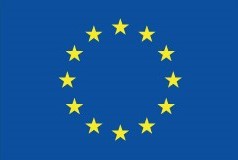- Home
- EU PiG – Sustainably produced ABF Rypsiporsas
EU PiG – Sustainably produced ABF Rypsiporsas
The calculated carbon footprint (CF) using Rypsiporsas on this farm is lower than that of pigs raised in other parts of Europe with feed containing soybean meal. To calculate the carbon footprint, Matti Ropilo uses the Biocode tool, which is based on ISO standards and IPCC recommendations.
Ambassador: Matti Ropilo, Finland
Publication date: July 2020
Theme: Precision production
Challenges: Increasing overall farm sustainability
Biocode tool results
Benefits
- 2.5 kg CO2eq /liveweight kg during 2019
- In comparison: the 2017 CF is, on average, 3.3 kg CO2eq /liveweight kg (in other Rypsiporsas farms)
- Reduction in CF of 24%
- 35% reduction in purchased protein, saving approx. €20,000/year
- Key production KPIs remain consistent: feeding days 96/97 from 2017–2020
- ADG has increased slightly from 874 g/day in 2017 – 892 g/day in 2019 and so far in 2020
Based on these assumptions, variable production costs after the implementation of best practice decreased by 7.4% per kg of meat, mainly due to lower feeding costs (by 8.8%), vet and medical costs (by 7%) and energy costs (by 17%). On the other hand, an increase was observed in the case of fixed costs of depreciation of 3.6% per kg, as a result of investments. In total, the entire costs of meat production were 5.1% lower, as per kg of meat.
Costs
- Two storage tanks, one for oatmeal-based protein food and one for rapeseed oil, cost about €15,000
- Solar panel installation cost €18,000 for a 16 kW system with an ROI of 11 years
Sustainability in practice
Locally produced rapeseed meal is used as a substitute for soy meal as part of a carefully calculated ration. This removes imported soy meal from the diet, which due to the high CF of transport, lowers the overall CF of the feed and pigs. This intervention is also supported by:
- The farm uses solar panels to increase energy production
- Foodstuffs make the biggest share of the farm’s footprint, so they participate in a project to optimise the input/output-ratio of feed
- The project studies conservation agriculture in terms of fertilisation and soil cultivation methods
- Several studies show the effects of conservation agriculture on greenhouse gas emissions, and it also reduces the risk of soil run-off
Biocode – carbon footprint calculator
Back to: EU PiG – Precision production
Case studies
Technical reports
Precision production best practice challenges
Increasing overall farm sustainability
Dashboard systems/benchmarking
Increasing gilt and sow performance
Contact us
To access more information, contact RPIG (Finland): Ina Toppari or EUPig@ahdb.org.uk
This project has received funding from the European Union`s Horizon 2020 research and innovation programme under grant agreement No 727933.
 Government logo
Government logo

